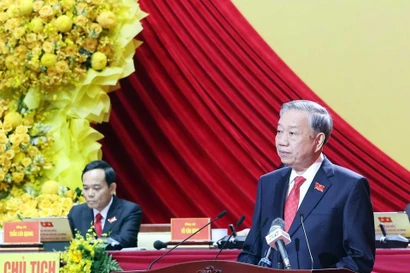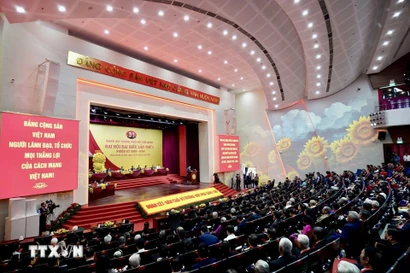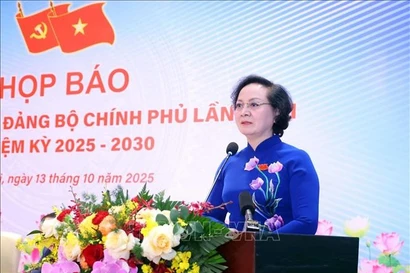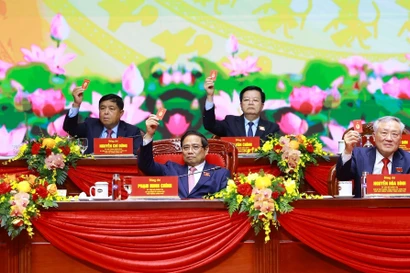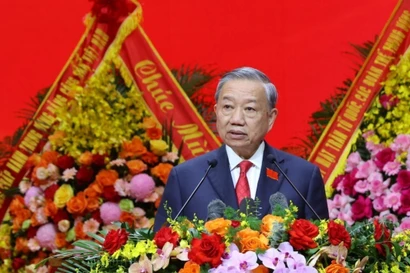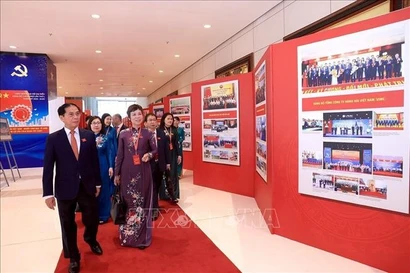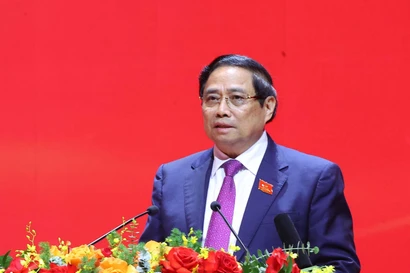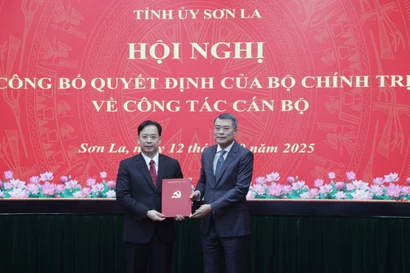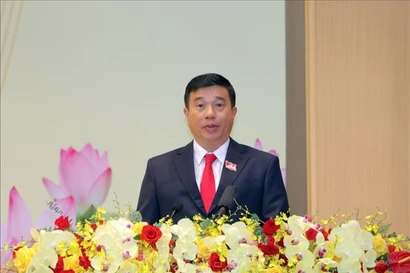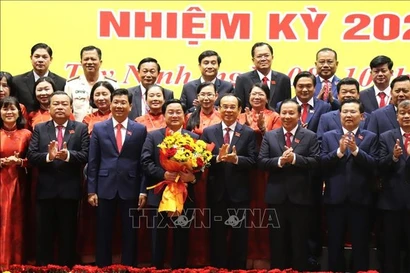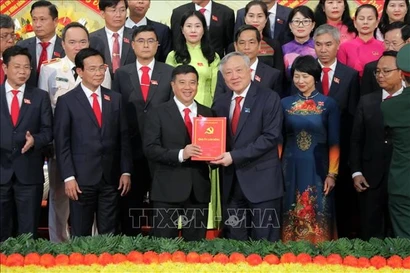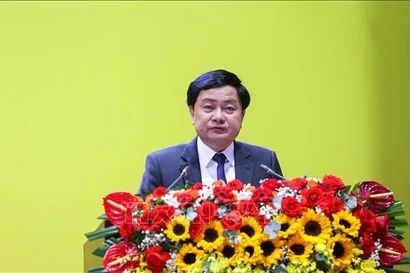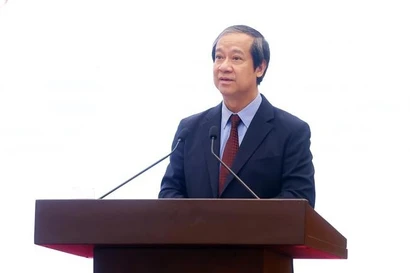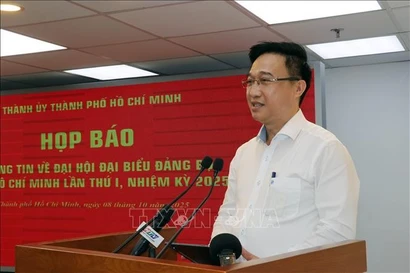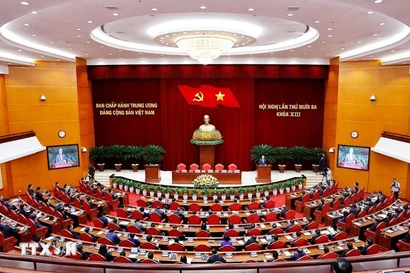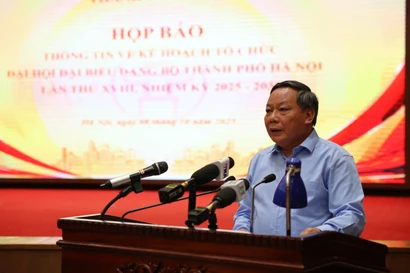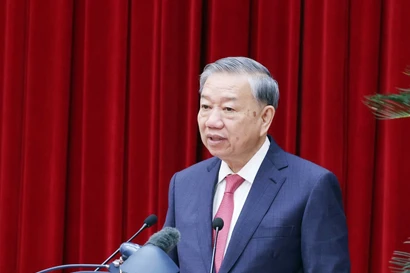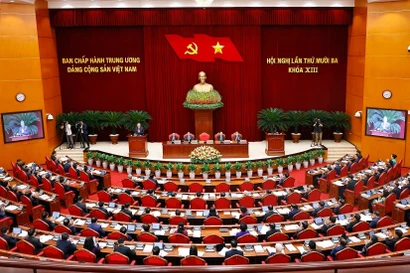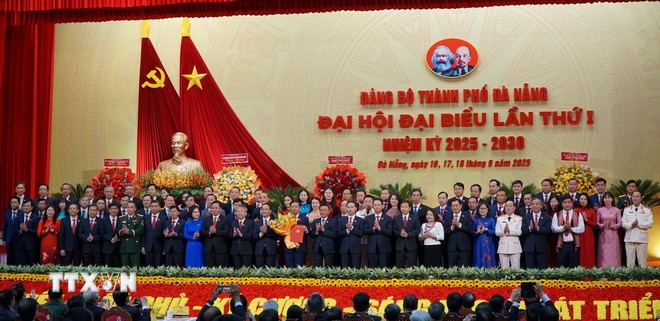
Da Nang (VNA) – Political reports presented at the Congresses of the Party Organisations of localities in the central and Central Highlands region have highlighted a broader vision and strong ambition for annual economic growth of at least 10%, and the determination to develop major and well-connected infrastructure projects to unlock new development opportunities and promote breakthroughs.
Strategic infrastructure breakthroughs
Currently, most provinces and cities in the central and Central Highlands region are expanding development space, placing special emphasis on investing in strategic infrastructure, particularly transport, to enhance connectivity and drive socio-economic development in the coming time.
As the core hub of the central and Central Highlands region, Da Nang aims to become a growth pole of Vietnam by 2030, targeting an annual average GRDP growth of at least 11%. By 2045, the city is expected to become an ecological and smart urban centre, serving as a free trade hub, international financial centre, industrial and logistics hub, innovation and startup centre, as well as a livable and high-standard tourism city in Asia.
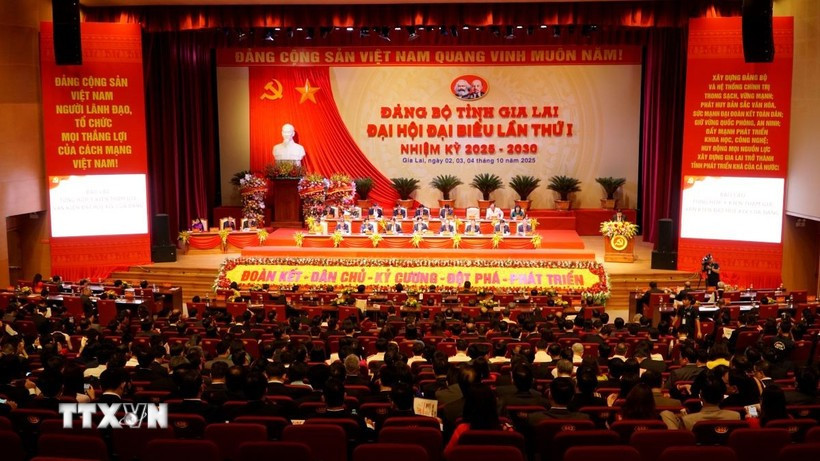
In the next five years, Da Nang will focus on accelerating the progress of key infrastructure projects, including developing Lien Chieu port into an international gateway in the region; expanding Terminals T1 and T2 at Da Nang International Airport to a capacity of 10 million passengers per year; upgrading Chu Lai airport to international standards; developing strategic interregional East–West transport infrastructure; and others.
The city will also consider investing in the Da Nang–Thanh My–Ngoc Hoi–Bo Y expressway and other transport projects connecting Da Nang with southern Laos and northeastern Thailand, as well as several urban railway lines.
As Vietnam’s second-largest province, Gia Lai will concentrate on developing a modern, smart, and well-connected socio-economic infrastructure system to meet its growth demand, including a provincial road network; expressways and national roads linking key economic and tourism zones; a railway connecting provinces in the Central Highlands, and two new freight railway stations in Tuy Phuoc and Van Canh communes to serve cargo transportation to and from Quy Nhon port, Nhon Hoi Economic Zone, and logistics centres.
The locality will also invest in new terminals, expand aprons, and construct a second runway and taxiways in line with the plans for Phu Cat and Pleiku airports; expand or build new docks at Quy Nhon–Thi Nai–Dong Da, Nhon Hoi, and Phu My and Hoai My ports. Other projects include building Thi Nai 2 Bridge, completing the coastal road connecting to Quang Ngai province; and constructing a new provincial administrative centre in Nhon Hoi Economic Zone.
Meanwhile, Quang Ngai province, strategically located at the Indochina crossroads and serving as the gateway from the Central Highlands to the sea, will prioritise key and strategic interregional projects, especially in transportation, including completing the Quang Ngai–Kon Tum expressway, a coastal road, Mang Den and Ly Son airports, and upgrading major national highways to create a seamless transport corridor from the Central Highlands to the sea with international connectivity.
Motivations for socio-economic development
Localities in the Central and Central Highlands region all identified science – technology development, innovation, and digital transformation as a top breakthrough and the key driver for socio-economic development.
Khanh Hoa aims to become a centrally-run city by 2030, a national growth pole and modern maritime economic hub. It will speed up economic restructuring through science, technology, innovation, and digital transformation, with high-tech industry, renewable energy, logistics, digital economy, tourism, and the private sector as key growth pillars. By 2030, the province aims to rank among the top 10 in the country in developing infrastructure for scientific research, technological advancement, innovation, and digital transformation.
Meanwhile, Gia Lai plans to restructure its economy and establish a new growth model, using science, technology, innovation, and digital transformation as the main drivers to boost productivity, quality, efficiency, value-added, and competitiveness. It will focus on developing the digital, green, and circular economy and building a digital society, aiming to make the locality an increasingly attractive destination for domestic and international tech businesses and scientists, as well as a regional centre for science, technology, and innovation.
Da Nang sets to become a leading city in science, technology, innovation, startups, and digital transformation by 2030 through finalising related mechanisms and policies in line with Resolution No. 57-NQ/TW. It will pay attention to effectively implementing the regulatory sandbox for new technological solutions, prioritising areas such as blockchain, fintech, artificial intelligence, robotics and automation, and digital assets.
Da Nang will prioritise resources and international cooperation for infrastructure investment to support science, technology, innovation, and digital transformation, particularly projects such as an AI research and training lab, a small-scale semiconductor advanced packaging Lab-Fab, and a Da Nang innovation space.
In his address at the 1st Congress of the Party Organisation of Da Nang, Politburo member and Permanent Member of the Party Central Committee's Secretariat Tran Cam Tu urged Da Nang to proactively explore new growth models and drivers, build on science, technology, innovation, and digital transformation; and focus on improving the investment environment while enhancing economic productivity, quality, and competitiveness./.
